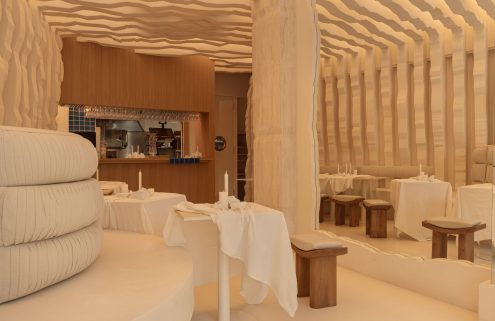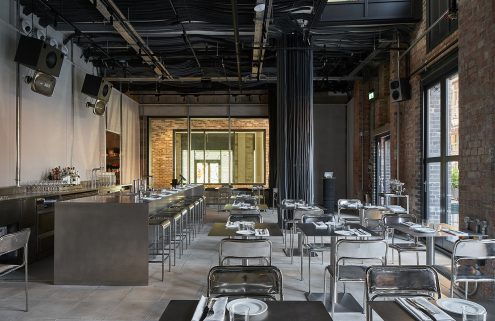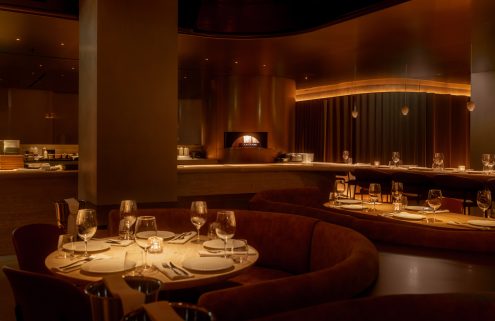
Photography: Romain Laprade

Photography: Romain Laprade

Photography: Romain Laprade

Photography: Romain Laprade

Photography: Romain Laprade

Photography: Romain Laprade

Photography: Romain Laprade
Rotterdam’s culinary scene has a colourful new player: Héroine restaurant and bar in the city’s burgeoning Het Industriegebouw hub.
Designed by practice Modiste, Héroine sits within the Modernist post-war building designed by Hugh Maaskant and Willem van Tijen that’s been refashioned as restaurants, boutique stores and workspaces in recent years.

Says Modiste: ‘Our aim from the start was to honour the origins of the building and strip the room back to its raw structural elements of concrete, metal window frames and open space floor plan as it was intended in the original design.’
Modiste has retained what it calls the ‘scars of the past’ inside the space while opening up its 270 sqm floor plan. The practice has also created contrast between Héroine’s industrial upper half, with its exposed pipes and painted brickwork, and the lower half which oozes 1970s glamour via warm, wood-panelled walls.

‘Where most people think of the classical white cubic exploits of Le Corbusier and our Dutch hero Gerrit Rietveld, we couldn’t help conjure up the wood panelling, huge planters and decadent chrome of 1970’s Warren Platner,’ says the studio.
Burgundy banquettes, blonde wooden tables and a mix of chrome and rattan dining chairs hone the Modernist vibe. The building’s large industrial windows provide lots of natural light, but softer elements come from disc-shaped lights sunk into the wooden panels.

While its interiors might nod to the past, Héroine’s food does not. Chef Michael Schook has designed a rotating menu of international dishes to complement sommelier Fred de Neef’s wine offerings, served as four, five or seven courses.
Read next:
8 of the best rooftop bars in London this summer
Frederik Bille Brahe brings his culinary magic to the National Gallery of Denmark























